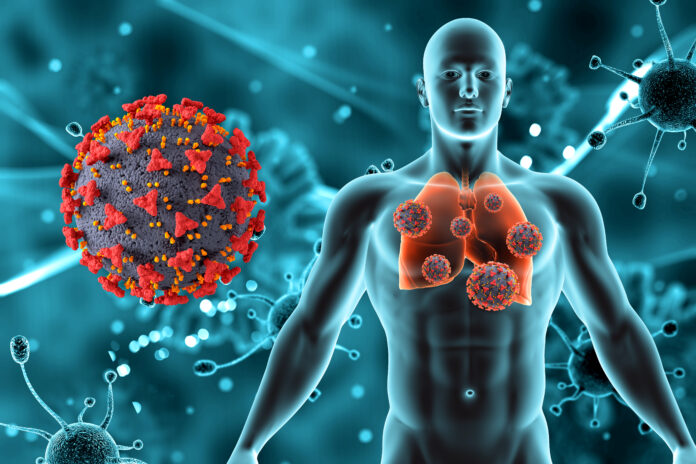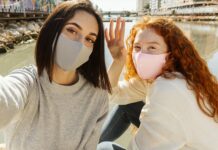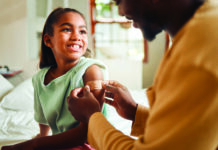By
Newswise — Four years ago, a brand new virus turned the world upside down.
Today, thanks to researchers, medical and public health experts, pharmaceutical companies, engineers and others, we know more and can do more about the coronavirus called SARS-CoV2, and the disease called COVID-19, than ever before.
“We’re in a much better place than we were just a year or two ago,” said Adam Lauring, M.D., Ph.D., an infectious disease doctor and virus expert at MIchigan Medicine, the University of Michigan’s academic medical center. “While the virus continues to challenge us with its evolution, we have vaccines that work and a surveillance system that provides data to inform what might be annual updates moving forward. We still have some work to do to improve vaccine coverage, especially in the most vulnerable populations.”
The virus can still cause serious problems in the short and long term, said Preeti Malani, M.D., a U-M infectious disease doctor with special training in the care of older adults. So it’s still important to take steps to avoid infection and avoid passing the virus to others if you catch it.
Here’s a summary of the latest things to know and do:
It’s still infecting, sickening and killing a lot of people in the U.S.
- More than 65,000 Americans have died from COVID-19 in the past year, or more than 1,200 a week on average. That’s far lower than during the first two years of the pandemic, but it’s still a large number of people and higher than deaths from flu.
- We don’t know the exact number of cases anymore because most tests aren’t getting reported, or people aren’t even testing at home when sick. But wastewater and emergency department monitoring show activity was recently higher than at many points in the past two years. As of early March, wastewater levels remain high nationwide.
- Because early symptoms of COVID-19, flu and RSV are similar, checking this map can tell you about current levels of all respiratory illness in your state.
If you have symptoms, you should still stay home and away from other people.
- You can spread many respiratory viruses for a few days before you develop symptoms. But the start of symptoms like fever, chills, congestion, runny nose, coughing and fatigue should tell you to stay away from other people, because you could make them sick too. Whether or not you test yourself or your sick child for COVID-19 or flu, your symptoms mean you should rest and stay home.
- New guidelines for isolating: When symptoms start to ease up from any respiratory illness, new guidance from the Centers for Disease Control and Prevention shortens the amount of time someone has to stay in isolation. Remember that isolation means staying home if you live alone, or staying home and staying away from other people if you share a home. If a person’s symptoms have eased and any fever is gone (without taking fever reducing medication), they can leave their isolation.
- But a big thing has NOT changed: You can still spread viruses in these first days after being sick. So for at least five days after leaving isolation, the CDC says, recently ill people should still take other precautions. That includes wearing a mask around other people, making sure to test negative on a rapid test before seeing other people, plus using ventilation by opening doors or windows or turning on central fan systems.
Some people still have a higher risk of severe illness or death than others.
- As age goes up, so does the risk of severe COVID-19. People over 65 made up 67% of all hospitalized COVID-19 patients in recent months.
- People who aren’t fully vaccinated with all the recommended doses for them accounted for 96% of all people hospitalized for COVID-19 in recent months.
- People who have conditions or take medicines that weaken their immune systems have a higher risk of getting very sick or dying.
- People who have disabilities, and conditions such as heart or lung diseases, diabetes or obesity also have a higher risk of severe respiratory illness. So do pregnant people, newborns and babies.
The COVID-19 virus is still mutating as it spreads.
- Scientists acting as “virus hunters” are capturing and studying SARS-CoV2 samples from wastewater, and seeing how the virus’ genes are changing over time. This can help detect new strains that might pose more of a risk to people, or might spread more easily. They also monitor how the flu virus mutates as it travels. This information also helps inform updates to the COVID-19 vaccines.
- People who have a weakened immune system can harbor an infection for a long time, which may mean the virus has more chance to mutate while it’s making new copies of itself inside their cells. Lauring’s team’s research recently showed which immunocompromised people have a higher risk of having an active infection for weeks, not just days.
Vaccines against COVID-19 work well, but it’s important to get the latest version.
- An updated vaccine became available last September. Just recently, the CDC recommended that people over age 65 get a second dose of it, if they already had a dose. This is because of high risk and the potential that the vaccine’s effectiveness wanes fastest in older people.
- Everyone over the age of six months should get a dose of the updated vaccine if they haven’t already – even if they had COVID-19 in recent months.
- Staying up to date on vaccination is especially important for older people, people with weakened immune systems or disabilities, pregnant people, infants, and people working in jobs that bring them in contact with the public.
- People with certain immunocompromising conditions have special guidance about vaccination.
- Vaccines against COVID-19 don’t guarantee you’ll avoid illness. But recent studies show that people who are up to date on their vaccines have a much lower risk of getting sick, getting seriously ill, developing long COVID or dying from COVID-19. Lauring and colleagues nationwide recently published findings showing that people who received the updated vaccine in early fall 2023 were less likely to go to an urgent care center or emergency room, or to be hospitalized, than those who didn’t.
Medicines for COVID-19 can help, if people get them in time.
- A big reason for the drop in hospitalizations and deaths in the past two years has been the medicines, such as Paxlovid and Remdesivir, that can fight an infection in people who might have a high risk of severe disease or death.
- The sooner a high risk person gets these medicines, the better they work. Paxlovid should be started within five days of the start of symptoms, and Remdesivir should started within seven days of the start of symptoms in high risk people who can’t take Paxlovid because of other conditions or medications. Michigan Medicine’s team offers a free guide for these treatments.
- If you are in any of the high risk groups, or your child or a person you care for is, you should have a game plan in advance for how you will get Paxlovid or Remdesivir if you or they develop COVID-19 symptoms or test positive.
- In addition to seeking a prescription from your usual health care provider or a Test to Treat site, you can use the Home Test to Treat service to see a provider and get a prescription or referral virtually.
Filtering and refreshing indoor air can prevent spread of many viruses.
- The viruses that cause COVID-19, flu and RSV mainly travel through the air, and can remain suspended for hours.
- Opening windows, running heating or cooling system fans constantly so that air goes through high quality filters, and wearing good masks can all make a difference in how much virus someone could breathe in.
- Highest risk places for catching COVID-19, and other viruses, include crowded indoor places, places where windows don’t open and air isn’t flowing (including airplanes while on the ground), and places where sick people might seek care. Wearing well fitting masks in these places, or avoiding the most crowded times, can cut risk.
Home tests are great, if used at the right times.
- You can now get two kinds of tests to use at home: rapid tests that detect the antigens that the virus carries on its outer surface, and home tests that look for the RNA inside virus particles. Some of these tests can look for both SARS-CoV2 and flu virus.
- Many people can get home tests or walk in rapid tests for free, but others may have to pay. Find out how to get a free RNA home test, which is more accurate than a rapid antigen test and detects both COVID-19 and flu, if you have Medicare, Medicaid, VA or Indian Health Service insurance, or no insurance. These tests are also available for purchase if you don’t qualify for a free one. You can also find a free walk-in testing site or contact your local health department.
- A positive home test result is unlikely to be wrong, especially if you’re testing after being sick for several days or are starting to feel better. But if you test right after an exposure to a sick person or soon after the start of symptoms, you may get a negative test even though you’re actually infected. Learn more about the timing of testing.
COVID-19 can cause lasting effects throughout the brain and body.
- The more times you have COVID-19, the more likely you are to suffer an effect beyond the short-term illness.
- In general, people who are up to date on their vaccination and/or received prompt treatment when they get sick have lower risks, but the risk is not zero.
- Post-COVID health issues: Recent research suggests that COVID-19 is linked to reductions in thinking ability, increased risk of heart attack and stroke caused by blood clots, new cases of diabetes, and other issues that may resolve or not after a few months.
- Long COVID: About 17% of all U.S. adults are estimated to have ever qualified for a formal diagnosis of long COVID, and 6.8% currently qualify, because of multiple symptoms a month or more after having COVID-19. There is no one test or single treatment, but people experiencing these long lasting symptoms should tell their health care provider, who can follow the latest guidelines for evaluating them.
- People experiencing any lasting effects after having COVID-19 can join a national study that is trying to find out more about long COVID and get early access to new potential treatments.
We still have a lot to learn.
- Researchers at U-M and around the world are still working to understand the virus, how it interacts with our bodies, what impacts it has on our bodies and minds in the long term, which specific characteristics put someone at higher risk of acute and long term illness, how to predict infection patterns more accurately, and how best to treat long COVID.
- A lot of misinformation and deliberate disinformation has traveled worldwide in the last four years about COVID-19 and the preventive measures, treatments and vaccines against it. That has led some people to avoid getting vaccinated or vaccinating their children. Research has shown that encouragement from a trusted messenger such as a friend, family member or local leader can overcome hesitation to get vaccinated or treated.
- Experts say we still have a lot to learn about how to apply the lessons of the last four years to the next pandemic and avoid making the same mistakes again.
Image: kjpargeter/freepik






































